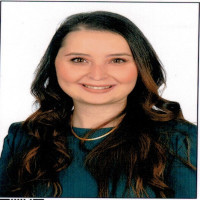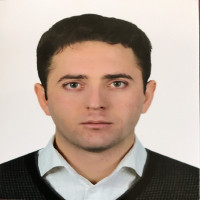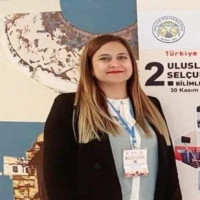Orginal Research
Issue Reviewers

 0000-0002-4454-0397
0000-0002-4454-0397



 0000-0002-7652-8392
0000-0002-7652-8392





 0000-0002-9439-8448
0000-0002-9439-8448

 0000-0002-4377-9339
0000-0002-4377-9339
 0000-0002-9419-4816
0000-0002-9419-4816



Aim & Scope
Journal of International Health Sciences and Management (JIHSAM) aims explain the relationship between management/ administration and health sciences. The JIHSAM includes healthcare management/ administration, public health, clinics and case management/ administration, dental management, pharmaceutical economics and management, nursing management and health planning, policy and management, and other health management issues.
Journal of International Health Sciences and Management (JIHSAM) is intended to be a vehicle for the exploration and discussion of Health Sciences and Management issues and is aimed in particular at enhancing communication between Health Sciences and Management researchers, the globalization of healthcare services, international patient transfers (medical tourism), hospital management, organization behavior of health institute, patient rights and safety and satisfaction, health policy and health reforms, health economics and quality of life.
In addition, the following healthcare management issues are evaluated within the scope of the journal;
political philosophy and health policy, spiritual health, history and philosophy of health and healthcare, global cooperation and development for quality in healthcare, health accreditation, risk management in healthcare organizations, health law, quality assessment of health, patient and employee satisfaction occupational health and safety in health care, financial management in healthcare, harassment in health institutions, corporate culture and commitment institutes of health, procurement and purchasing in health institutions, material and device management in healthcare organizations, performance management in healthcare organizations, health information systems, management and organization in healthcare, accounting and finance in healthcare organizations, strategic management in health care, production management in health care, health economics, health policy and planning, marketing in healthcare, health reform, disaster management in health care ,public relations in health institutions, health and social security systems, health insurance, health communication, healthcare management and ethics, country comparisons of health systems, health statistics, risk management in patient and employee safety ,patient rights in an international perspective, innovation in healthcare services, human resources management in healthcare, professionalism in health management and information security in healthcare organizations.
To achieve the journal's objectives, authors are encouraged to write in an on-technical style, which is understandable to health policy practitioners and specialists from other disciplines and in other countries.
Author Guidelines
Types of Articles
Journal of International Health Sciences and Management will be accepting submissions in three different formats:
(1)"Samples of the best practices in health management" of around 2,000 words (excluding abstract and references), concentrating on proposed, discussed, just passed and/or implemented management in one of the Health Systems and Institution. These do not have to present empirical data but analyze actor sand processes.
(2) "Full-length Original Articles" of around 5,000 words (and not more than 6000 words), mainly empirical, analyzing the impact of health sciences and management. In addition, more theoretical, conceptual or methodological papers can be submitted.
(3) "Reviews/comparative analyses" of around 8,000 words (and not more than 10,000 words) can either be
(a) systematic reviews of Health Sciences and Management issues
(b) or examine certain aspects of health science and management in a systematic, comparative manner across a number of countries.
In all cases, Authors should provide sufficient background and context and discuss their findings in an international context to ensure that their manuscript can be appreciated by an international readership.
Besides these three main types of submissions, Health Science and Management is interested in publishing debate among the readers in the form of letters and repliques as well as commissioned editorials.
The material should not have been previously published in peer-review for all types of submissions. Publication as an abstract, academic thesis or discussion paper is permissible but needs to be stated in the cover letter to the editor upon submission.
Submission Preparation Checklist
As part of the submission process, authors must check off their submission's compliance with all of the following items, and submissions may be returned to authors that do not adhere to these guidelines.
The submission has not been previously published, nor is it before another journal for consideration (or an explanation has been provided in Comments to the Editor).
The submission file is in OpenOffice, Microsoft Word, RTF, or WordPerfect document file format.
Where available, URLs for the references have been provided.
The text is single-spaced; uses a 12-point font; employs italics rather than underlining (except with URL addresses); and all illustrations, figures, and tables are placed within the text at the appropriate points, rather than at the end.
The text adheres to the stylistic and bibliographic requirements outlined in the author Guidelines, which is found in About the Journal.
If submitting to a peer-reviewed journal section, the instructions in Ensuring a Blind Review have been followed.
Ethics committee approval must be obtained separately for the clinical and experimental human and animal studies required by the ethics committee decision. This approval should be stated and documented in the Method section of the article.
Size and Layout
Manuscripts should be written in English. They should be clear, concise and logical, and follow the suggested word length (see above) as well as the number of tables and figures (see below).
Manuscripts should be structured as follows (excluding samples of the best practices in health management):
Cover letter
Title Page (incl. Acknowledgements, e.g. to sponsors, and Conflict of Interest statement)
Abstract-Keywords
Introduction
Materials and methods
Results
Discussion
Conclusions
Appendices (will be included as online supplementary material if the manuscript is accepted).
There should be no footnotes or endnotes in the manuscript.
Manuscripts that do not comply with the above mentioned manuscript guidelines will be considered as non-admissible. All submissions will be checked for plagiarism. The handling editor will be informed about any incorrectly cited text passages/ findings of plagiarism.
Figures, tables and equations
Figures and tables are encouraged but should not be too technical. Technical tables and especially equations or other formulae should be avoided. Except in exceptional circumstances, the admissible number of figures and tables together is 3 for samples of the best practices in health management articles, 5 for full-length articles and 6 for reviews and comparative articles. Additional figures and tables may be supplied as supplementary material. Figures and tables should still be legible when reduced in size for printing (for more details see below).
Abstract
An abstract of 220 words (and not more than 250) must be included in the submitted manuscript. As the abstract is often viewed separately from the article, it must be able to stand alone. It should state briefly and clearly the purpose and setting, the principal findings and major conclusions, and the paper's contribution to knowledge. If applicable, the country/countries/locations should be clearly stated, as should the methods and nature of the sample, the dates, and a summary of the findings/ conclusion. Please note that excessive statistical details should be avoided, abbreviations/acronyms used only if essential or firmly established, and the abstract should not contain references to other published work.
Keywords
Authors are asked to classify their submission using the provided classification system. They are also asked to include 3 to 6 keywords.
Illustration services
Figure captions
Ensure that each illustration has a caption. Supply captions separately, not attached to the figure. A caption should comprise a brief title (not on the figure itself) and a description of the illustration. Keep text in the illustrations themselves to a minimum but explain all symbols and abbreviations used.
Tables
Number tables consecutively in accordance with their appearance in the text. Place foot notes to tables below the table body and indicate them with superscript lowercase letters. Avoid vertical rules. Be sparing in the use of tables and ensure that the data presented in tables do not duplicate results described elsewhere in the article.
Throughout the manuscript text, Authors must indicate where approximately the figures and tables should be included.
References
Citation in text
Reference to a journal publication:
References (APA style): Cite references in the text as “last name, year”, e.g. (Turkmen, 2004). For multiple authors and page numbers in the text, e.g. (Turkmen et al., 2013:65).
References should be listed in alphabetical order, and include all the authors’ last names and initials, title, journal, year, volume, issue, and pages etc.
Reference Examples:
Gardner H, Bozkus T (2012). Multiple intelligences: the theory in practice. New York: Basic Books.
Li, G., Hart, A. ve Gregory, J., (1998). Flocculation and sedimentation of high turbidity waters, Proceedings , 9th Biennial Conference, International Association on Water Quality, 1137–1143, Vancouver: International presentation
Li, G., Hart, A. ve Gregory, J., (1998). Flocculation and sedimentation of high turbidity water, Water Resources, 25, 9, 1137-1143. :Article
Stanford P (2003). Multiple intelligence for every classroom. Journal of Education Psychology, 39(2): 81-89, http://www.iscs-a.org/content/39/2/80 (accessed May 14, 2013).
Turkmen M (2004). The effects of martial arts on children development. International Journal of Education Reviews, 8(3): 276-281.
Ethical Principles and Publication Policy
The secretary and editorial team review the submitted articles for content and relevance, regardless of the authors' names, qualifications, and affiliations.
It is ensured that the submitted texts that are determined to be suitable for the journal and the names of the file owners are anonymized.
However, even the section with the ethical statement in the text is cleared of the university's name and sent to at least 2 appropriate reviewers for evaluation. Responses and files from reviewers are also forwarded to authors, making sure they are anonymous. This process continues like this. All processes and versions are recorded online.
The only criteria for reviewer assignments. It is the mastery of the subject and the field.
All submissions must meet COPE's four criteria for scientific authorship. (see Submission Rules Page)
The editor welcomes and evaluates the objections and complaints submitted by all world citizens via e-mail regarding the published works.
All possible conflicts of interest between natural and legal persons must be declared in every study uploaded to the journal.
Studies published in the journal are open to direct revision in the first five days. In the next process, change requests will be published as correction articles in the next issue or reported as withdrawn.
Price Policy
Journal of International Health Sciences and Management (JIHSAM) does not charge any article submission, processing charges, and printing charges from the authors. The journal is an open access peer-refereed scientific journal. We have no purpose of profit and no publication fees.

